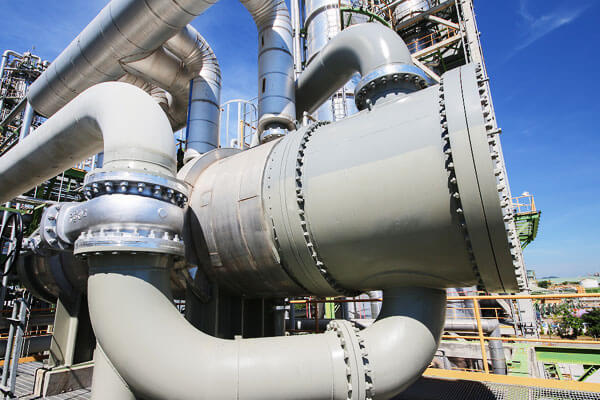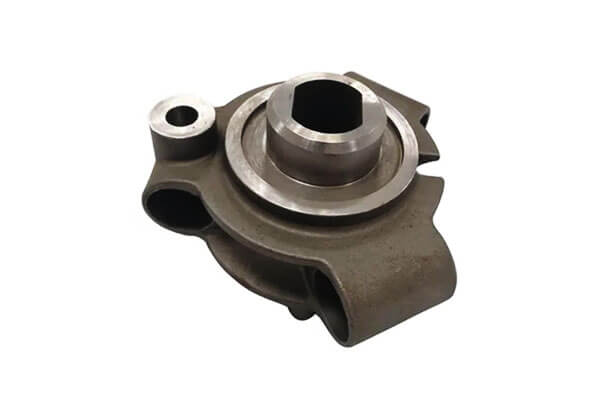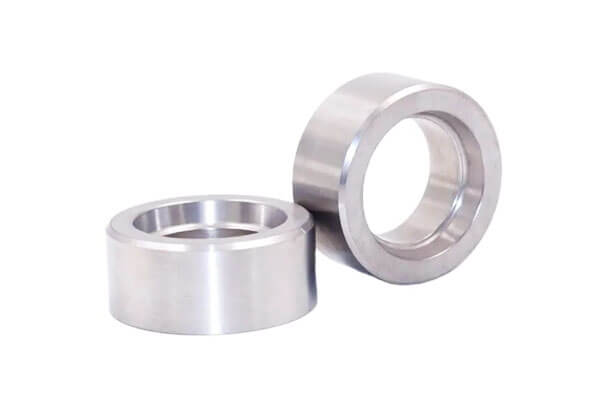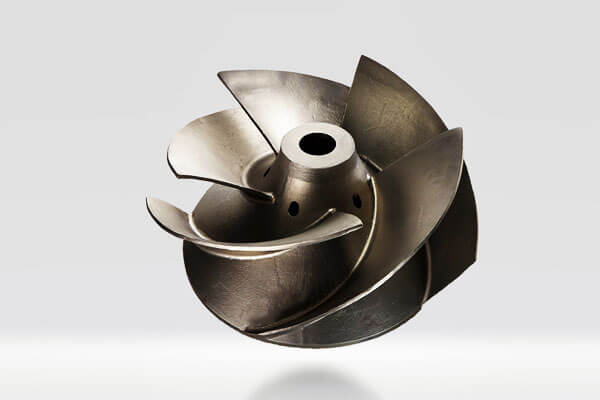1. ভূমিকা
In today’s industrial landscape, the need for high-performance materials capable of enduring extreme conditions is more critical than ever.
Heat-resistant alloy castings have emerged as the solution to this challenge, providing the durability and strength required in some of the harshest environments.
থেকে aerospace engines থেকে power plants, these advanced materials ensure that components perform optimally, even under extreme temperatures and corrosive conditions.
The purpose of this post is to delve into the world of heat-resistant alloy castings. We will explore what these alloys are, why they matter, and how they’re used in manufacturing.
অতিরিক্তভাবে, we will highlight the processes, অ্যাপ্লিকেশন, and benefits that make these alloys indispensable in industries demanding high performance under stress.
2. What Are Heat-Resistant Alloys?
Heat-resistant alloys are specially formulated metals that retain their mechanical properties even when exposed to extreme temperatures.
These alloys are designed to perform effectively in environments where conventional materials would degrade due to thermal stresses, জারণ, or corrosion.

Due to their unique properties, heat-resistant alloys are essential for industries that demand high-performance materials capable of enduring continuous exposure to high temperatures.
Definition and Properties
Heat-resistant alloys are metals specifically engineered to withstand high temperatures without losing their strength, কঠোরতা, and resistance to wear.
Unlike regular materials, which may melt or soften at elevated temperatures, heat-resistant alloys maintain their structural integrity even in the most challenging conditions.
Key properties that define heat-resistant alloys include:
- High Melting Points: These alloys can endure temperatures above 1,000°C (1,832° F), with some advanced alloys remaining stable at temperatures well beyond that threshold.
Their high melting points make them ideal for use in turbines, জেট ইঞ্জিন, and other high-heat applications. - জারণ প্রতিরোধের: One of the major challenges in high-temperature environments is oxidation—the process where metal reacts with oxygen in the air, forming a layer of rust or scale.
Heat-resistant alloys are specifically engineered to form a stable oxide layer that protects the underlying metal from further oxidation, thus extending their service life. - ক্রিপ প্রতিরোধের: Creep is the gradual deformation of materials under constant stress and elevated temperature.
Heat-resistant alloys are designed to resist creep, allowing them to maintain their shape and strength even after extended exposure to high thermal loads.
This is particularly important for components like turbine blades or engine parts, which operate under continuous high-temperature conditions. - তাপীয় স্থিতিশীলতা: These alloys maintain their microstructure and mechanical properties even after prolonged exposure to high temperatures.
This property ensures they do not suffer from embrittlement or phase changes that could affect their performance in critical applications. - জারা প্রতিরোধের: In addition to high-temperature performance, many heat-resistant alloys also resist corrosion caused by gases, রাসায়নিক, and liquids at elevated temperatures.
This makes them ideal for use in chemical processing industries, বিদ্যুৎ উত্পাদন, and other harsh environments.
Types of Heat-Resistant Alloys
Heat-resistant alloys can be broadly categorized into three primary types based on their base metal: nickel-based alloys, cobalt-based alloys, and iron-based alloys.
Each category has specific advantages and is suited for different high-temperature applications.
- নিকেল-ভিত্তিক অ্যালো
Nickel-based alloys are some of the most widely used heat-resistant materials due to their excellent resistance to high temperatures, জারণ, and corrosion.
Nickel Alloys castings These alloys are commonly used in environments where extremely high temperatures are sustained for long periods, যেমন aerospace engines, গ্যাস টারবাইন, এবং পারমাণবিক চুল্লি.
উদাহরণ: ইনকেল 718, Incoloy 800, মনেল 400 - Cobalt-Based Alloys
Cobalt-based alloys offer exceptional resistance to wear, জারা, and high-temperature oxidation.
Cobalt Based Alloys While they are less commonly used than nickel alloys, cobalt alloys are crucial in applications
where components must withstand both extreme heat and physical wear, যেমন aerospace turbine engines এবং রাসায়নিক চুল্লি.
উদাহরণ: তাড়াতাড়ি, স্টেলাইট - Iron-Based Alloys
Iron-based heat-resistant alloys, which are typically alloys of iron with chromium, সিলিকন, and other elements, are used for applications where moderate temperature resistance is required.
Iron Based Alloys castings These alloys are particularly valued for their strength and resistance to oxidation, and they are commonly used in industrial applications, সহ power plants, চুল্লি, এবং তাপ এক্সচেঞ্জার.
উদাহরণ: স্টেইনলেস স্টিল 310, FeCrAl alloys (iron-chromium-aluminum alloys)
3. Why Use Heat-Resistant Alloys for Casting?
High-Temperature Performance
One of the most compelling reasons for using heat-resistant alloys in casting is their ability to maintain their mechanical properties under extreme temperatures.
These alloys are designed to withstand the high thermal stresses encountered in industries like aerospace, স্বয়ংচালিত, and energy.
উদাহরণস্বরূপ, মধ্যে gas turbine engines, the parts must endure not only extreme heat but also high rotational speeds and mechanical forces.
Heat-resistant alloys ensure that components, such as turbine blades and rotors, retain their strength and functionality under such harsh conditions.
জারা এবং জারণ প্রতিরোধ ক্ষমতা
Exposure to high temperatures often leads to oxidation and corrosion in conventional metals, which can significantly shorten the lifespan of critical components.
Heat-resistant alloys are designed to form stable, protective oxide layers that shield the material from further degradation.
This is particularly important in industries like power generation, where components are exposed to corrosive gases at high temperatures for extended periods.
Material Strength and Durability
Beyond just withstanding heat, heat-resistant alloys possess remarkable tensile strength, resistance to creep, and overall durability.
উদাহরণস্বরূপ, ইনকেল 718, a nickel-based alloy, is known for its high yield strength and ability to maintain its structural integrity under both stress and heat.
This makes it a preferred choice for components that operate in extreme conditions, যেমন jet engine turbine blades বা combustion chamber liners.
4. The Process of Casting Heat-Resistant Alloys
Casting heat-resistant alloys is a highly specialized process that requires precision and expertise.
These alloys, due to their unique properties such as high melting points and oxidation resistance, demand specific techniques to ensure optimal casting outcomes.
Here’s a detailed look at how these alloys are cast, the challenges faced, and the technologies that have been developed to improve the process.
Overview of Alloy Casting
The casting process for heat-resistant alloys is similar to conventional metal casting but with some crucial differences. The primary steps include:
- Melting the Alloy: Heat-resistant alloys must be heated to extremely high temperatures in specialized furnaces, capable of reaching the alloy’s melting point.
উদাহরণস্বরূপ, ইনকেল 718 melts at approximately 1,300°C (2,372° F). A failure to maintain the right temperature can lead to issues like poor alloy composition and structural weakness. - Pouring into Molds: Once the alloy has reached its molten state, it is carefully poured into molds.
The molds used for heat-resistant alloys are specially designed to withstand the high temperatures of the molten metal.
সাধারণত, these molds are made from materials such as বালি, সিরামিক, বা investment casting shells, which provide the necessary thermal resistance and precision. - কুলিং এবং সলিডিফিকেশন: After pouring, the molten alloy is allowed to cool and solidify.
This step is critical, as improper cooling can lead to defects such as cracking, ওয়ার্পিং, or shrinkage.
The cooling rate must be precisely controlled to prevent these issues.
উদাহরণস্বরূপ, মধ্যে বিনিয়োগ কাস্টিং, the cooling process is slower, which allows the casting to retain its shape and integrity.
Challenges in Casting Heat-Resistant Alloys
Casting heat-resistant alloys presents several challenges due to the inherent properties of these materials:
- High Melting Points: Heat-resistant alloys require furnaces that can reach and sustain extremely high temperatures.
This presents both technical and financial challenges, as specialized equipment and energy costs can add to the overall production expense. - Mold Material Compatibility: The molds used to cast heat-resistant alloys must not only withstand high temperatures,
but they also need to resist corrosion and prevent any chemical reactions with the molten alloy.
উদাহরণস্বরূপ, সিরামিক ছাঁচ are commonly used because of their ability to withstand high heat, but they must also be resistant to the corrosive nature of alloys like ইনকেল বা তাড়াতাড়ি. - Cracking and Shrinkage: As heat-resistant alloys solidify, they can contract significantly, leading to potential defects like cracks or shrinkage.
Managing this requires precise control of the pouring process, mold design, এবং শীতল হার.
Rapid cooling or uneven temperature distribution can cause cracks or uneven solidification, which ultimately affects the mechanical properties of the cast part. - জারণ: Since heat-resistant alloys are often exposed to high temperatures during casting, the risk of oxidation is significant.
The presence of oxygen can lead to contamination and structural degradation of the alloy.
To prevent oxidation, the casting process typically occurs in a controlled environment,
such as a vacuum or inert gas atmosphere, to minimize exposure to oxygen.
Technological Advances in Casting
Advancements in casting technology have made it possible to produce highly complex and precise heat-resistant alloy components with better efficiency. Some of the key innovations include:
- বিনিয়োগ কাস্টিং (Precision Casting): This process allows for the creation of parts with intricate geometries and excellent surface finishes.
It is particularly useful for producing complex components such as টারবাইন ব্লেড, ইঞ্জিনের যন্ত্রাংশ, এবং high-performance aerospace components.
বিনিয়োগ কাস্টিং দ্য বিনিয়োগ কাস্টিং process begins with creating a wax pattern of the part, which is then coated with a ceramic shell.
After the wax is melted away, a molten heat-resistant alloy is poured into the shell, forming the desired shape. - ভ্যাকুয়াম কাস্টিং: Vacuum casting is used for high-precision applications.
By casting in a vacuum, manufacturers can prevent oxidation and contamination of the alloy,
resulting in stronger and more reliable components.
This technique is often employed for high-performance components in industries like মহাকাশ এবং বিদ্যুৎ উত্পাদন, where reliability is critical. - 3D Printing for Mold Creation: Recent developments in additive manufacturing (3ডি মুদ্রণ) have also made a significant impact on casting heat-resistant alloys.
3D printing allows manufacturers to quickly produce detailed and complex mold designs that would be difficult or impossible to create using traditional methods.
This technology also shortens lead times, reduces material waste, and enables the production of highly customized parts for niche applications. - Controlled Atmosphere Furnaces: These furnaces are used to control the temperature and minimize the effects of oxidation.
A controlled atmosphere, typically filled with inert gases like argon or nitrogen, prevents direct exposure of the molten alloy to oxygen.
This ensures that the alloy maintains its purity and strength, even after casting.
Post-Casting Considerations
After the alloy has solidified and the mold has been broken away, the final product may require additional processing to enhance its properties:
- তাপ চিকিত্সা: Some heat-resistant alloys undergo তাপ চিকিত্সা processes such as solution annealing বা age hardening.
These processes improve the alloy’s strength and resistance to creep, making them more suitable for high-performance applications. - Surface Coating: To further enhance oxidation resistance, certain alloys may be coated with protective layers such as thermal barrier coatings (TBCs).
These coatings provide an additional layer of protection, especially in components that will experience extreme temperature fluctuations. - মেশিনিং: While casting provides the basic shape, some parts may require additional মেশিনিং to achieve the desired dimensions or finish.
This is especially true for components used in high-precision industries like aerospace, where tolerances are often very tight.
5. Applications of Heat-Resistant Alloy Castings
মহাকাশ শিল্প
The aerospace sector is one of the primary industries where heat-resistant alloy castings are critical.
টারবাইন ব্লেড, ইঞ্জিন উপাদান, এবং নিষ্কাশন সিস্টেম must be able to endure extreme temperatures and oxidative conditions.
Heat-resistant alloys like ইনকেল 718 are used extensively due to their high strength and thermal stability.
বিদ্যুৎ উত্পাদন
In power plants, components such as টারবাইনস, তাপ এক্সচেঞ্জার, এবং combustion chambers are exposed to extreme heat and corrosive gases.
Heat-resistant alloys ensure that these components continue to function reliably over long periods, reducing the risk of failures and downtime.
Automotive and Marine
In high-performance vehicles, বিশেষত race cars এবং high-efficiency engines, heat-resistant alloys are used for parts like নিষ্কাশন সিস্টেম, ভালভ, এবং ইঞ্জিন উপাদান.
These alloys are also crucial in the marine sector, কোথায় marine turbines must perform in both high-heat and corrosive environments.
Chemical and Process Industries
Heat-resistant alloys are frequently used in chemical reactors, চুল্লি, and other industrial equipment that operate under high thermal and corrosive stress.

দ্য chemical industry relies on these materials for components that must endure harsh environments while maintaining high performance.
6. Advantages of Heat-Resistant Alloy Castings
Heat-resistant alloys, particularly in the context of casting, offer a variety of distinct advantages that make them essential for applications in extreme environments.
Enhanced Performance at Extreme Temperatures
One of the most significant advantages of using heat-resistant alloy castings is their ability to withstand extreme temperatures without compromising their mechanical properties.
These alloys are specifically designed to retain strength and structural integrity in environments that would typically cause standard materials to degrade.
- High Melting Points: Heat-resistant alloys have exceptionally high melting points,
which means they can remain solid and maintain their strength even in the most intense conditions.
উদাহরণস্বরূপ, ইনকেল 718, a nickel-based alloy, is capable of performing under temperatures exceeding 1,000°C (1,832° F) without losing its mechanical properties. - ক্রিপ প্রতিরোধের: At high temperatures, metals tend to deform over time due to the stress of constant heat.
Heat-resistant alloys are engineered to exhibit superior creep resistance,
which means they can maintain their shape and strength even when exposed to continuous high temperatures for extended periods.
This makes them ideal for applications in turbines, engines, and exhaust systems where constant thermal load is expected.
Resistance to Corrosion and Oxidation
Heat-resistant alloys excel in environments where oxidation and corrosion are prevalent due to the combination of high heat and exposure to reactive chemicals or gases.
These materials are specifically formulated to resist the effects of these harsh conditions, making them invaluable in industries such as aerospace, বিদ্যুৎ উত্পাদন, and chemical processing.
- জারণ প্রতিরোধের: Alloys like তাড়াতাড়ি এবং ইনকেল form a stable oxide layer on their surface when exposed to high temperatures.
This protective layer prevents further oxidation, ensuring that the alloy maintains its strength and functionality even in the presence of oxygen and moisture at elevated temperatures. - জারা প্রতিরোধের: In addition to oxidation, heat-resistant alloys resist corrosion caused by harsh chemicals or gases.
- This quality is critical in chemical reactors, তাপ এক্সচেঞ্জার, and power plant components, where exposure to aggressive environments is constant.
Reduced Maintenance and Downtime
The inherent durability of heat-resistant alloys results in longer service life for components made from these materials.
This longevity leads to significant reductions in the frequency and cost of maintenance,
which is particularly advantageous in industries where downtime translates to lost productivity and revenue.
- Longer Service Life: Components made from heat-resistant alloys, such as turbine blades or engine parts,
can endure the stresses of high-temperature environments for years without exhibiting signs of wear or failure.
This extended service life reduces the need for frequent replacements and repairs, leading to lower overall operational costs. - Lower Maintenance Intervals: The high strength and resistance to thermal degradation offered by heat-resistant alloys ensure that parts perform reliably over time.
ফলস্বরূপ, industries can minimize the need for costly downtime, maintenance interventions, and unscheduled repairs.
Superior Material Strength and Durability
Heat-resistant alloys are designed not only for high-temperature performance but also for exceptional strength and durability.

These materials can withstand high mechanical loads, resist fatigue, and maintain their structural integrity even under extreme pressure conditions.
- টেনসিল শক্তি: Heat-resistant alloys, যেমন ইনকেল 625, offer excellent tensile strength,
meaning they can withstand significant forces without breaking or deforming.
This makes them suitable for critical applications in high-stress environments, such as aircraft engines or industrial gas turbines. - ক্লান্তি প্রতিরোধের: These alloys are engineered to resist fatigue, a common issue in applications subjected to repeated stress or thermal cycling.
Components like jet engine parts বা exhaust valves need to endure countless cycles of heating and cooling.
Heat-resistant alloys are designed to minimize material fatigue, ensuring they remain functional for a longer duration.
Customization and Precision
Heat-resistant alloys are highly versatile when it comes to customization, and the casting process itself allows for the production of highly intricate and precise components.
The ability to create complex geometries with high accuracy is an advantage, especially in applications where part design plays a crucial role in performance.
- জটিল আকার: Through advanced casting techniques such as বিনিয়োগ কাস্টিং বা precision casting,
manufacturers can produce heat-resistant alloy parts with intricate geometries, ব্যাপক যন্ত্রের প্রয়োজনীয়তা হ্রাস করা.
This flexibility enables the production of parts with highly specific shapes that meet exact functional requirements. - Tailored Material Properties: Heat-resistant alloys can be tailored to meet the specific needs of the application by adjusting the alloy composition.
উদাহরণস্বরূপ, varying the levels of ক্রোমিয়াম বা নিকেল can enhance specific properties like oxidation resistance or tensile strength.
This adaptability allows for the creation of components that perfectly align with the operational needs of different industries.
Minimal Material Waste
Casting heat-resistant alloys typically produces near-net-shape components, meaning that the cast part requires minimal post-processing or machining to achieve the desired final form.
This efficiency not only reduces waste but also lowers manufacturing costs.
- Near-Net Shape Process: Since the cast components are closer to the final shape, there is a significant reduction in material waste.
This is particularly important when dealing with expensive alloys like ইনকেল বা তাড়াতাড়ি, where raw material costs are high. - Reduced Machining Requirements: By minimizing the need for post-casting machining, manufacturers can save time and reduce costs associated with labor and tooling.
This results in faster production times and lower overall manufacturing costs for high-performance parts.
7. Challenges in Heat-Resistant Alloy Castings
High Cost of Raw Materials
One of the primary drawbacks of using heat-resistant alloys is the cost.
Alloys such as ইনকেল এবং তাড়াতাড়ি are more expensive than standard metals, due to the high cost of raw materials and the complex processing required.
Complexity in Manufacturing
Casting heat-resistant alloys involves specialized equipment and processes that can be both technically challenging and resource-intensive.
The need for precise control over factors like temperature and mold design adds complexity to the overall manufacturing process.
Limitations in Alloy Selection
Choosing the correct alloy for a particular application is crucial.
Not all heat-resistant alloys are suited for every high-temperature environment, so careful consideration is needed to ensure the alloy will provide optimal performance.
8. Key Factors Affecting Quality and Cost
Alloy Selection and Composition
Selecting the right alloy with the appropriate composition is essential for achieving the desired performance.
Each alloy offers specific advantages, such as better corrosion resistance or higher tensile strength,
depending on the needs of the application.
Casting Methodology
The casting technique used can significantly influence the final product’s quality and cost.
উদাহরণস্বরূপ, বিনিয়োগ কাস্টিং may be ideal for creating precise parts, but it comes with a higher price tag due to the detailed process involved.
Post-Casting Processes
Post-casting treatments, যেমন তাপ চিকিত্সা বা surface coatings, may be necessary to improve the alloy’s performance.
These additional steps, while beneficial, can add to the cost and processing time.
9. Future Trends in Heat-Resistant Alloy Castings
Advances in Alloy Development
Ongoing research continues to push the boundaries of heat-resistant alloys,
with the goal of developing materials that can withstand even higher temperatures, are more corrosion-resistant, and are more cost-effective to produce.
3D Printing and Additive Manufacturing
The use of 3ডি মুদ্রণ এবং additive manufacturing in casting is expected to revolutionize the production of heat-resistant alloys.
These technologies enable faster prototyping and the creation of more complex parts, reducing lead times and costs.
Sustainability in Casting
As sustainability becomes increasingly important, industries are exploring ways to recycle heat-resistant alloys and reduce waste during the casting process.
Innovations in recycling and more environmentally friendly casting methods will likely shape the future of the industry.
10. উপসংহার
Heat-resistant alloy castings are essential for industries that demand high-performance materials capable of withstanding extreme temperatures and harsh conditions.
These advanced alloys provide significant advantages in terms of durability, শক্তি, এবং নির্ভরযোগ্যতা,
especially in critical applications like aerospace, বিদ্যুৎ উত্পাদন, and automotive sectors.
Despite the challenges associated with casting these materials, the ongoing advancements in alloy development and casting technologies promise a future
where heat-resistant alloys will continue to evolve, offering even greater performance and sustainability.
If you’re looking for high-quality custom heat-resistant alloy castings, নির্বাচন এই আপনার উত্পাদন প্রয়োজনের জন্য নিখুঁত সিদ্ধান্ত.







